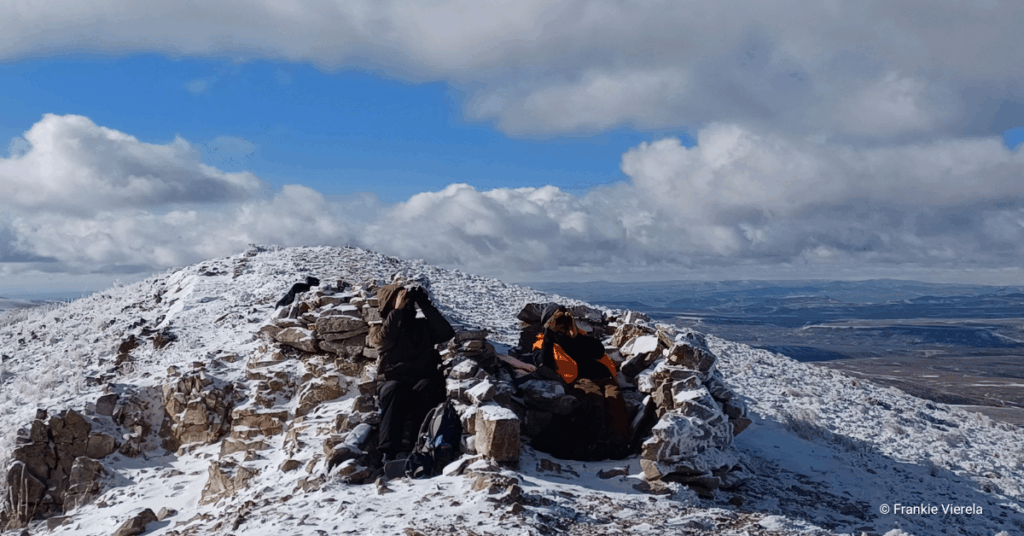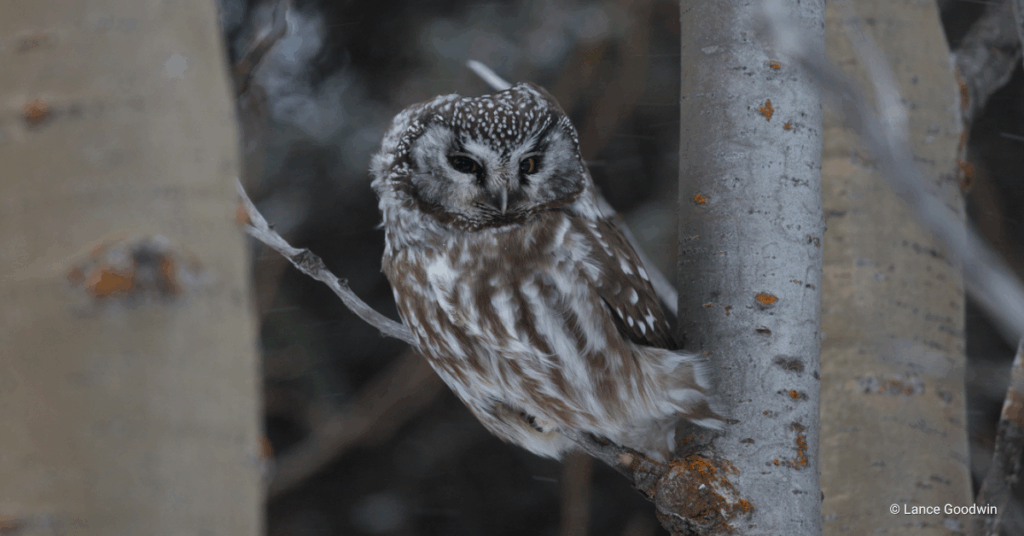Utah’s West Desert is home to salt flats, sagebrush, mountains, and a military training area. This desert can be a harsh environment, but despite it all, some animals make their homes there. One such species is the Golden Eagle.
In recent years, however, Utah’s Golden Eagle population has seen declines. Our scientists noticed a downward trend in our migration count data, signaling that we needed to focus resources on Golden Eagle conservation. Since then, our team has run multiple projects to better understand Golden Eagle populations. A big part of our studies has been Golden Eagle nest entries, where we monitor nestlings by banding, placing transmitters, and taking blood samples. With these methods, we can better understand survival rates, movement patterns, potential threats, and the levels of heavy metals or diseases present in these nestlings. Additionally, we have set up motion-sensitive cameras to better understand what kinds of food these birds eat. Getting a view into these nests has revealed that most of their diet is made up of medium-sized mammals—with lagomorphs (order made up of hares, pikas, and rabbits) at the top. With this information, we determined that the decline of jackrabbits in the last year due to Rabbit Hemorrhagic Disease (a lethal form of viral hepatitis) was likely a factor in record low reproductive success for Golden Eagles.
Gathering this information isn’t for the faint of heart. To set up cameras or band these birds, you start by climbing up mountains, often with no trail in sight, and fighting against loose scree. Once you make it up, you then have to set up your climbing gear to rappel off the side of the cliff. Finally, once you make it into the nest, you must carefully retrieve Golden Eagle nestlings with two-inch talons. So what does a scientist pack to prepare for a day out in the West Desert? Keep reading to find out.

Q Wooden Block: Dr. Steve Slater, our Conservation Science Director, made this spacer block to help scientists better secure and standardize the fit of transmitter backpacks on Golden Eagles.
R Personal Locator Beacon: Fieldwork often takes our crew into remote areas with limited cell service. If there is an emergency, this beacon can signal for help regardless of service via satellites.
S Blood Vial: We monitor the health of nestlings through blood sampling. One component we track is contaminants in the blood, such as heavy metals.
T Tablet: To easily relocate nests we are monitoring, we load photos of Golden Eagle nest sites for our scientists to reference in the field.
U Alpha Numeric Color Bands: Color bands are much easier to resight than standard USGS bands. Their bright colors and large letters are easier to read through binoculars or photographs.
V Paper Maps: Sometimes, the old-fashioned way is the best way to find nests in areas of limited service.
Want to learn more about our Golden Eagle nestling work? Check out the presentation our Research Associate, Dustin Maloney, recently gave on “What are Golden Eagle Nestlings Eating” https://www.youtube.com/watch?v=7_4sJdLtZ3M&ab_channel=HawkWatchInternational
Q Wooden Block: Dr. Steve Slater, our Conservation Science Director, made this spacer block to help scientists better secure and standardize the fit of transmitter backpacks on Golden Eagles.
R Personal Locator Beacon: Fieldwork often takes our crew into remote areas with limited cell service. If there is an emergency, this beacon can signal for help regardless of service via satellites.
S Blood Vial: We monitor the health of nestlings through blood sampling. One component we track is contaminants in the blood, such as heavy metals.
T Tablet: To easily relocate nests we are monitoring, we load photos of Golden Eagle nest sites for our scientists to reference in the field.
U Alpha Numeric Color Bands: Color bands are much easier to resight than standard USGS bands. Their bright colors and large letters are easier to read through binoculars or photographs.
V Paper Maps: Sometimes, the old-fashioned way is the best way to find nests in areas of limited service.
Want to learn more about our Golden Eagle nestling work? Check out the presentation our Research Associate, Dustin Maloney, recently gave on “What are Golden Eagle Nestlings Eating” https://www.youtube.com/watch?v=7_4sJdLtZ3M&ab_channel=HawkWatchInternational
This blog was written by Sammy Riccio, HWI’s Communications Manager. You can learn more about Sammy here.



